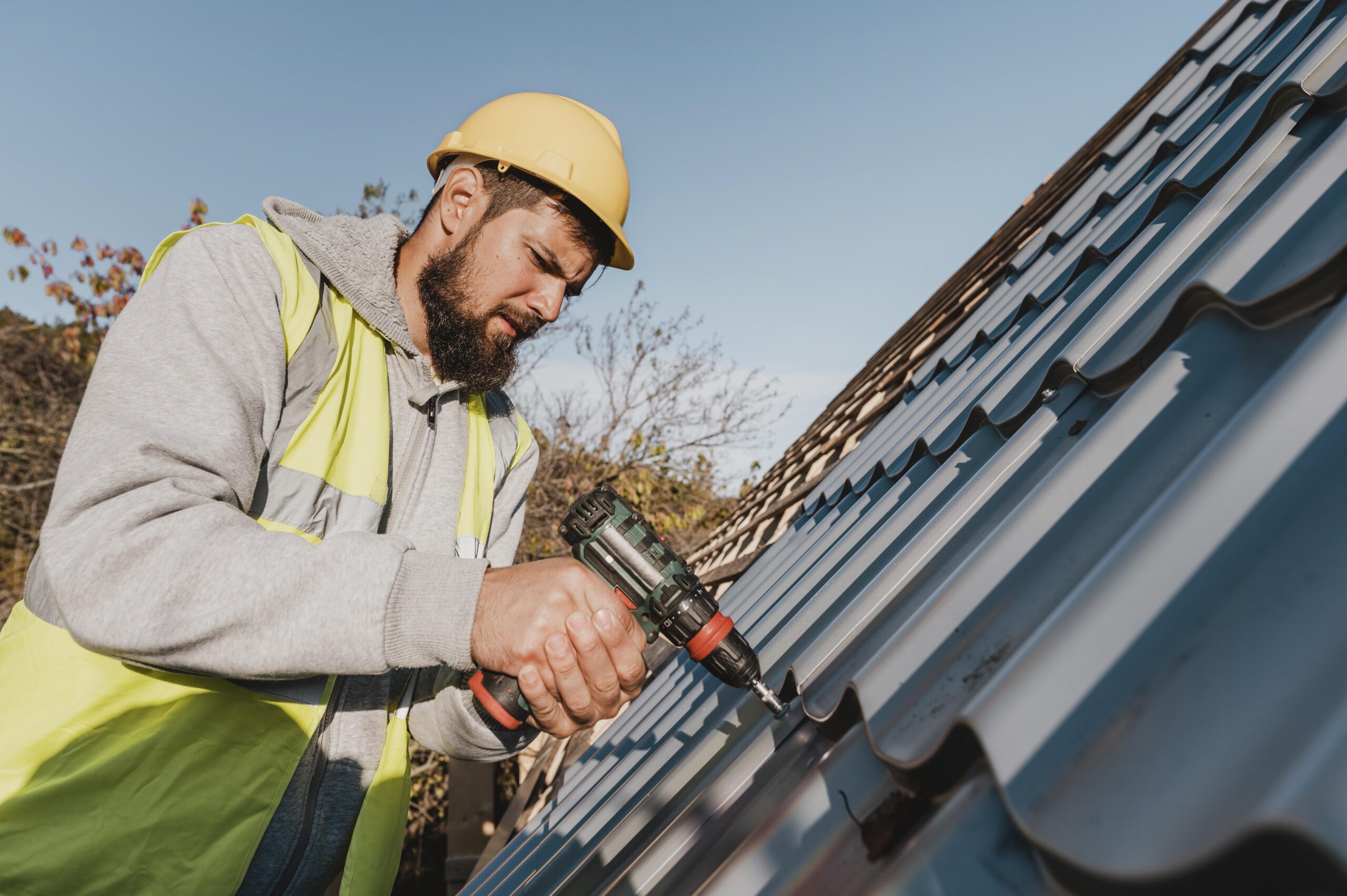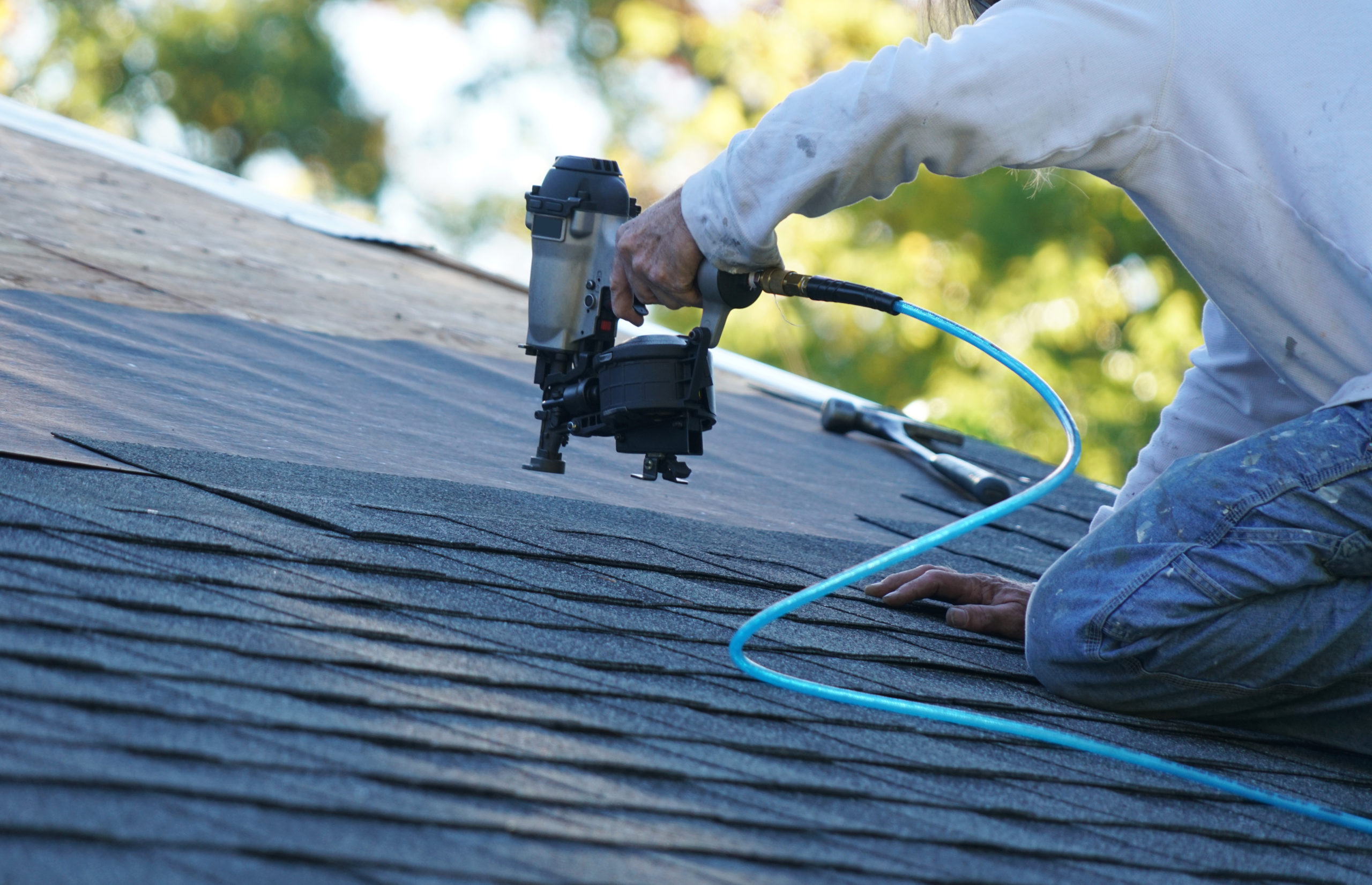Seasonal Roof Repair Service Checklist: Prepare Your Roofing for every single Weather
By adhering to a seasonal roof covering repair list, you can remain in advance of potential problems. Let's explore how appropriate maintenance can protect your home and extend your roofing system's life expectancy.
Inspecting Your Roof for Winter Readiness
As wintertime techniques, it's vital to inspect your roofing system to verify it can withstand severe climate problems. Beginning by looking for missing or harmed tiles; even a small problem can result in significant leakages when snow and ice gather. Next, take a look at the blinking around smokeshafts and vents-- this area is commonly susceptible to water invasion.
Do not forget to seek indications of sagging or unequal surfaces, as these might indicate structural problems. Furthermore, confirm your seamless gutters are clear; clogged rain gutters can result in ice dams that harm your roofing system.
 roof repair
roof repair
Spring Cleaning: Clearing Particles and Monitoring for Damages
Once winter's grip launches, it's time to take on springtime cleaning on your roofing system by eliminating particles and looking for any kind of damages. Beginning by evaluating your roof covering for fallen branches, leaves, and other debris that can catch wetness and create rot. A clean roofing system advertises much better drainage and protects against mold growth.
Following, grab a tough ladder and thoroughly check roof shingles for fractures or missing pieces. Take note of areas around smokeshafts and vents, as these places are vulnerable to leakages. Don't neglect to examine your gutters, guaranteeing they're complimentary from obstructions that could lead to water pooling.
While you're up there, seek signs of wear, like rust on metal flashing or loosened seals around skylights. Addressing them currently can save you from expensive repair work later on if you spot any type of concerns. A little spring cleaning goes a lengthy way in keeping your roofing's stability.
Summer Season Warm: Examining Your Roof for Heat-Related Issues
As summer season warmth intensifies, it's necessary to check your roofing system for heat-related concerns. Inspect for any kind of tile damage, search for indications of heat fastening, and examine just how well your roofing system ventilates. Taking these actions currently roof repair gainesville ga can prevent larger troubles in the future.
Check for Tile Damage
 roof repair
roof repair
Examine for Warm Fastening
Warm fastening is a typical issue that can emerge during the scorching summer season, and it's vital to look for it on your roofing system. As temperature levels rise, roofing materials, especially asphalt shingles, can increase and contract. This motion can bring about bending, producing unpleasant bulges or fractures. Beginning by checking your roofing visually; search for any uneven surfaces or lifted sides. Pay unique focus to areas around vents and chimneys, where buckling is more probable to happen. If you identify any indications of warm buckling, it's crucial to address them immediately to prevent additional damage. If you're not sure regarding the extent of the concern or exactly how to repair it properly., take into consideration speaking with a professional.
Assess Roofing Ventilation Efficiency
After checking for warmth buckling, it's essential to review your roofing's ventilation efficiency. Appropriate air flow assists manage temperature level and moisture, protecting against damage from extreme warm. Bear in mind, keeping great ventilation not only extends your roof's life but likewise enhances your home's total energy effectiveness, assuring convenience during those warm summer months.
Rainy Season Readiness: Guaranteeing Appropriate Drainage
As the rainy season strategies, you need to guarantee your roofing's drain system prepares to handle hefty rainstorms. Start by inspecting your downspouts and rain gutters, and ensure they're clear of debris. Do not neglect to check the flashing and seals to stop leakages and water damages.
Examine Downspouts and seamless gutters
Start by inspecting for any kind of noticeable debris, like fallen leaves or twigs, that might obstruct the flow of Visit website water. Next, examine the downspouts for obstructions or damages; an obstructed downspout can create water to overflow, possibly destructive your roof covering and foundation. If you spot any kind of concerns, address them promptly to prevent costly fixings.
Clean Roofing Surface Debris
Utilize a roof rake or mop to delicately eliminate particles, being mindful not to harm the shingles. After cleaning, monitor your roofing system after hefty rainfalls to identify any kind of prospective issues early. Keeping your roof covering clear of debris is vital for protecting against pricey repair services down the line.
Check Flashing and Seals
After clearing your roof covering of particles, take a closer look at the flashing and seals around skylights, chimneys, and vents. These locations are essential for preventing leakages during the stormy season. Inspect the flashing for any type of indicators of corrosion, fractures, or gaps. If you discover any kind of damage, it is necessary to repair or change it immediately. Next, examine the seals; they ought to be intact and tight. Seek any kind of peeling or damaged areas that could permit water to seep in. If you find any type of endangered seals, consider resealing them with a top quality roof covering sealer. Ensuring these components are in good condition will certainly help maintain proper drainage and shield your home from water damage throughout heavy rains.
Checking and Keeping Roof Seals and Flashing
While it might appear simple to overlook, examining and preserving roof covering seals and blinking is important for preventing leaks and water damage. Beginning by examining the seals around skylights, chimneys, and vents. Look for any type of splits, spaces, or indications of wear. It's ideal to reseal them with appropriate roof covering sealant to guarantee a tight fit. if you detect any kind of issues.
Next, take a look at the blinking, which guides water away from important areas. Inspect for rust, loosened areas, or curved edges.
Last but not least, don't forget to clean off any debris that could block the seals or flashing. Maintaining these components in great shape will certainly assist secure your roof versus the elements and prolong its lifespan.
Seamless Gutter Maintenance: Keeping Water Streaming Smoothly
Since your rain gutters play a vital duty in directing rain away from your home, regular maintenance is vital for stopping water damages and structure problems. A clogged seamless gutter can lead to water overflow, which may damage your roofing and home siding.
Following, inspect for any type of indicators of rust, holes, or sagging areas. Repair or change the damaged components quickly if you notice any damage. Confirm downspouts are directing water at least six feet away from your structure. If required., consider including extensions.
Ultimately, examine that your seamless gutters are appropriately sloped, preferably a quarter inch for every 10 feet. This slope warranties water moves smoothly towards the downspouts. Regular maintenance will maintain your seamless gutters functioning successfully and secure your home from costly fixings.
Scheduling Professional Evaluations for Comprehensive Care
Frequently scheduling specialist inspections is necessary for keeping your roofing's integrity. These professionals can identify prospective problems before they become costly fixings. Goal for at the very least 2 assessments a year-- one in the spring and one more in the loss. This timing allows you to resolve any type of damages caused by winter months weather or summer tornados.
Throughout evaluations, professionals will evaluate shingles, blinking, and ventilation, guaranteeing everything's in leading form. They'll also examine for indications of wear, leaks, or mold and mildew, which you could neglect. Arranging these assessments not just prolongs your roofing's lifespan but also gives you assurance.
If you're unclear concerning the problem of your roof covering, do not wait to call an expert. Purchasing these check-ups now can conserve you a lot later on. Prioritize your roofing's health and wellness, and you'll be well-prepared for whatever weather condition comes your way.
Often Asked Questions
Just how Frequently Should I Check My Roofing Throughout the Year?
You must evaluate your roof at the very least two times a year, preferably in springtime and loss. After severe weather occasions, check for damages as well. Normal evaluations aid you catch issues early and conserve cash on fixings.
What Indications Show I Required a Roof Covering Replacement Rather Than Repair?
 roof repair
roof repair
Can I Execute Roofing Repairs Myself, or Should I Hire an Expert?
You can perform minor roof covering repairs yourself if you're comfy with heights and fundamental tools, but hiring an expert guarantees security and proper job. Don't take the chance of damages; it might be worth the investment for peace of mind.
What Are the Best Materials for Roof Covering Repair Works in Different Climates?
For different climates, you'll want products like asphalt shingles for moderate areas, steel roofing for extremes, and clay floor tiles for warm regions. Always think about regional weather condition patterns to assure your roofing system withstands the elements properly.
Exactly How Do Roof Covering Guarantees Influence Seasonal Upkeep Responsibilities?
Roof guarantees usually define upkeep obligations, so you'll need to examine the terms. If you do not keep your roof as called for, you might void the warranty, leaving you accountable for expensive repairs.
Seasonal Roof Covering Fixing List: Prepare Your Roofing System for Every Weather Condition
Once winter months's grip releases, it's time to take on springtime cleansing on your roofing by removing away debris and checking for any damage. Examine for any kind of shingle damages, look for signs of heat fastening, and evaluate how well your roof aerates. If you find any type of concerns, consider contacting a professional for repairs to keep your roofing system in top form and secure your home from prospective water damage.
While it may seem very easy to neglect, preserving and examining roof covering seals and flashing is crucial for preventing leaks and water damages.